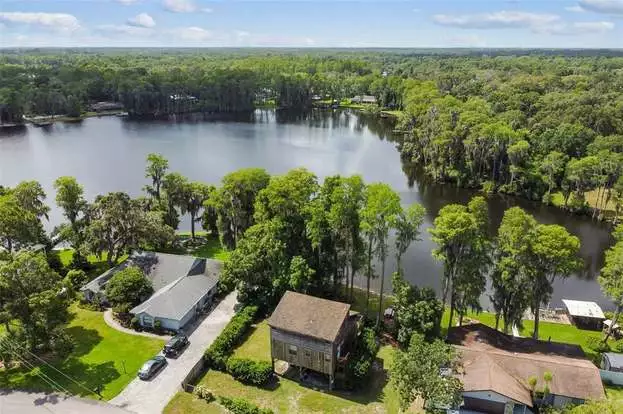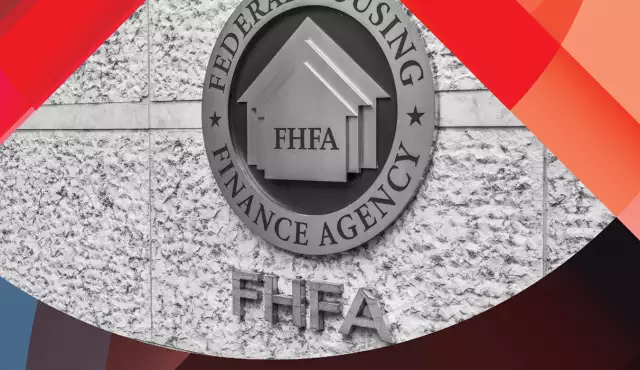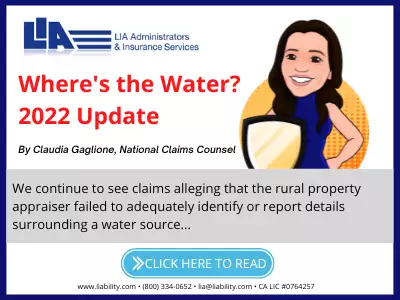Appraisals and Water Frontage
Appraisals and Water Frontage
Steven W. Vehmeier
Excerpts:
What about an off-site water view?
In a large townhouse-style condominium complex, there were only eight units that had water views. The view was of a section of the Intracoastal Waterway. It was from the second floor only, and over a six-foot high concrete block wall and across an open field. The builder charged more for those units because of the partial view.
My research discovered that the open field had just been purchased by a group that was building a four-level high-and-dry boat storage building. That bit of news made quite a few folks very unhappy and had a distinct impact on the value of those units. The moral of this story is that when you see open land between your subject property and the water, review ownership and the local building and zoning department’s comprehensive land use plan.
Water rights play a major role
With many water fronting properties, the topics of “riparian and/or littoral rights” (and the “prior appropriation doctrine” in the western states) come into play, along with several other issues. Those topics are fodder for other lengthy blog posts all by themselves. Appraisers should familiarize themselves with their state laws regarding water frontage and related rights, as they can vary from state to state.
Among the rights that come with real property ownership is the right to exclude others. When oceans, lakes, bayous, estuaries, rivers, streams, and ponds are involved, this right is a large part of what property purchasers are paying for.
To read more, click here
My comments: Worth reading, especially the last section “Final thoughts on the topic.”
I have lived in my island city for 42 years and had two waterfront homes, with docks, during the first 30 years. Both had many water related issues. One was on a tidal canal and built around 1943. Over time many homes along the waterfront, including mine, had non-permitted structures built over the water. The canal was owned by the state with an unclear easement for building beyond the rear lot line. The property owners asked me to do appraisals on the homes, including the rear structures but did not like my very high fee. It was so complicated the state and the city gave up trying to straighten it out.
The other home, built in 1946, faced a small bay off an outlet to a large part of San Francisco Bay. The large rear part of the lot was owned by the state and the city, which was leased to the homeowner. When the state said they were considering giving public waterfront access along the rear of all the homes unless we paid an annual lease fee, based on the extra lot square footage, we agreed to pay it.
I always wondered what other appraisers thought about these issues. They may not have even recognized or asked about them. Appraisers called very rarely.
I will never forget one of my first house appraisals here. The owner said it had a Bay view but did not mention you had to stand on the toilet to see through the window. After that, I told them the view had to be from a chair that you sat in!
=======================================
Solar Hemicycle–style Home Waterfront Home in Virginia Beach
Excerpt: The home was built in 1959 and is located on a 6-acre lake waterfront a few blocks from the Atlantic Ocean. The property’s list of amenities includes docks, decks, and piers spanning Crystal Lake. Four bedrooms and three bathrooms with 3,020 sq. ft.
The home’s materials list includes glazed brick and cypress; The roof is of copper; Inside and out, its earth tones are FLW-friendly, with muted reds and yellows topping the list and enhanced by accents, cabinetry, and paneling in various woods. The architecture of the house is expressed in the long, graceful curves that define the living area; Inside, the shared spaces feature a corner fireplace/fire as a centerpiece.
A long brushstroke of a curve opens the house through several doors to the lakeside patio. The tiered outdoor living area begins there, extends to a deck with a fire facility on a low landing, and ends at the dock and pier. An art studio is located in the middle of the beach excursion.
To read more, click here
To see a short video, click here
My comment: Definitely use CubiCasa for measuring ;>
=======================================
Maintain that Workfile
By Frank Gregoire
Excerpts: After receipt of a consumer or lender complaint (and often a Fannie Mae “tip”) against an appraiser licensee, among the first items requested by the regulatory agency or investigator is the appraiser’s workfile. If the complaint is a lawsuit, in many situations, a copy of the workfile must be turned over to the plaintiff or their counsel as part of the discovery process. When that complaint or lawsuit is filed against you, are you able to reconstruct what you did, how you did it, based on the contents of the workfile? All the appraisal experience in the world and assertions your opinions and conclusions are correct and accurate cannot help if you did not prepare and did not maintain that workfile.
Unfortunately, for many appraisers, preparation, and maintenance of the workfile is viewed as an inconvenient burden rather than a means of protection. Some mistakenly believe a copy of the appraisal report or review, along with a single data sheet for each of the comparable sales included in the report is adequate. Please examine the full text of the Record Keeping Rule for the minimum requirements. For certain, the attorneys handling the license complaint or civil suit against you have a copy and know what they expect. Wouldn’t it make sense to throw them off their game by maintaining a workfile with much more information, data, and support than they expect to see?
To read more, click here
My comments: Well written and worth reading. Frank Gregoire started appraising in 1977 and is very knowledgeable. He lives in Florida with has many waterfront homes.
=======================================
Are you thinking about doing non-lender appraisals?
What type of non-lender work is best for you?
I have been writing about non-lender work since 1992 in my monthly newsletter.
My articles discuss how they differ from lender work, the pluses and minuses, and how to market your services. I have done all the non-lender work I write about. Over time, I figured out which ones I like the best. From the day I started my business in 1986, I have always accepted non-lender appraisals.
Before spending a lot of time trying to get business, I strongly recommend reading some of my articles to see what appeals to you. They are all very different from lender appraisals. No AMCs, no Fannie/VA/FHA guidelines, usually no reviews, no CU. Higher fees that are much more stable than AMC fees.
A few of my articles:
To read lots more about non-lender appraisals, including many marketing tips, plus 2+ years of previous issues, subscribe to the paid Appraisal Today.
If this article helped you decide about doing non-lender appraisals, it is worth the subscription price!!
—————————————————————-
What’s the difference between the Appraisal Today free weekly email newsletters in this blog and the paid monthly newsletter?
Click here for more info!
=======================================
When mortgage rates last soared this much
Inflation ended 1986 at 1.1% — the lowest in two decades. By April 1987, inflation hit 4%.
Excerpt: History lesson?
Just like 2022, the 1987 story reminds us that all good things tend to end.
That’s not “gloom and doom” thinking; it’s a realistic assumption that human nature tends to go overboard when wallets are flush — and then reality pops. One reason for such pragmatism is the Fed’s odd role of being the adult in the room.
When times are economically slow, the Fed’s like a bartender — liberally spiking the economy with its stimulant of choice, cheap money.
But then when things get a bit frothy, the Fed turns into the party pooper — acting like a responsible tavern owner, it puts a chill on the economic fun with its “last call” action of hiking those same rates.
To read more and see an excellent graph from 1970 to today, click here
My comments: I recently read an article in my local newspaper about the differences between inflation and mortgage rates over time.
=======================================
Columbia, Maryland’s Quirky Street Names
From Nodding Night Court to Dove Sail Lane, the town’s address choices are both practical and poetic.
Excerpts: The street names in Columbia, Maryland, were drawn from art and literature. “Satan Wood Drive,” however, was the result of a typo. It was supposed to be named “satin wood” for a line from an Amy Lowell poem.
“Turn left off Windharp Way onto Deep Calm. (No, not ‘Street’ or ‘Court,’ just ‘Deep Calm.’)” Anyone asking for directions through Columbia, Maryland’s residential neighborhoods could be forgiven for thinking a helpful local was pulling their leg.
But this suburb between Baltimore and Washington, home to just over 105,000 people, really does have some of the wildest place names in America. Here, otherwise typical split levels and townhouses line Empty Song Road and Crazy Quilt Court, in neighborhoods with names like “King’s Contrivance” and “Hobbit’s Glen.”
The Columbia Archives provides an online, searchable database for local residents (and curious non-locals) to look up the origins of the community’s place names. Links in article.
The Faulkner Ridge neighborhood in Columbia, Maryland, is filled with street names drawn from William Faulkner’s novels.
To read more, click here
My comments: Worth reading. Fascinating story! There is an O’Rourke St. about 15 miles from where I live. What strange street names have you seen? I wonder what reviewers (human or computer software) think of these unusual names. Have to be careful when typing them to avoid typos!Two Trends Slowing Housing Market Normalization
=======================================

Existing Homeowners, the Immovable Object
June 20, 2022
Excerpts: You can’t buy what’s not for sale — and existing homeowners have little incentive to relieve the supply pressure, keeping a lid on housing market normalization.
Many existing homeowners are rate locked in to historically low, sub-3 percent mortgage rates, and now that rates are rising, there is a financial disincentive to sell their homes and buy a new home at a higher mortgage rate. The golden handcuffs of low mortgage rates prevent more supply from reaching the market.
Seniors choosing to age in place, rather than downsize or move to another home, further limits housing supply. A 2019 study from Freddie Mac shows that if adults born between 1931-1959 behaved like earlier generations, they would have released nearly 1.6 million additional housing units to the market by 2018.
To read more, click here
My comment: I was born in 1943. No way I’m giving up my 2.5% rate on my place to buy another home! I would not be interested in buying any other real estate now. Addicted to low rates!! I purchased my current home in 1985 at a 15% rate which was a low rate then. Rates went up to 18% during the early 1980s.
=======================================
Desktop Appraisals Information Sources
With business projected to decline significantly, maybe it’s time to consider desktops (and hybrids) now. Good current information in the three sources below.
Top Questions Appraisers Have About the New Desktop Appraisal Rules
By John Dingeman, Chief Appraiser Class Valuation
Excerpts: Before the announcements from Fannie and Freddie, it was anticipated that desktop appraisals would only be accepted for loans with a maximum of 80% loan-to-value ratio (LTV), where buyers were making at least a 20% down payment. However, the new guidelines apply to properties with up to 90% LTV. For appraisers, this means they’ll have the option to conduct a desktop appraisal much more frequently than they might have thought.
To read more, click here
My comments: Well written and worth reading. Dingeman is very knowledgeable on this topic. Class Valuation AMC does many desktops and hybrids.
———————————————————————————-
Three 1-hour webinars on Desktops and Hybrids
To watch the webinars, go to www.youtube.com and search for appraiser elearning.
———————————————————————————-
Fannie Appraiser Update June 2022
Desktop topics include:
It also includes Appraiser Quality Management.
To read more, click here
=================================
HOW TO USE THE NUMBERS BELOW. Appraisals are ordered after the loan application. These numbers tell you the future for the next few weeks. For more information on how they are compiled, go to www.mbaa.org
Note: I publish a graph of this data every month in my paid monthly newsletter, Appraisal Today. For more information or get a FREE sample issue go to https://www.appraisaltoday.com/products.htm or send an email to info@appraisaltoday.com . Or call 800-839-0227, MTW 7AM to noon, Pacific time.
My comments: Rates are going up. Make money while you can!!
=======================================
Mortgage applications increased 4.2 percent from one week earlier,
according to data from the Mortgage Bankers Association’s (MBA) Weekly Mortgage Applications Survey for the week ending June 17, 2022.
The Market Composite Index, a measure of mortgage loan application volume, increased 4.2 percent on a seasonally adjusted basis from one week earlier. On an unadjusted basis, the Index increased 3 percent compared with the previous week. The Refinance Index decreased 3 percent from the previous week and was 77 percent lower than the same week one year ago. The seasonally adjusted Purchase Index increased 8 percent from one week earlier. The unadjusted Purchase Index increased 6 percent compared with the previous week and was 10 percent lower than the same week one year ago.
“Mortgage rates continued to surge last week, with the 30-year fixed mortgage rate jumping 33 basis points to 5.98 percent – the highest since November 2008 and the largest single-week increase since 2009. All other loan types also increased by at least 20 basis points, influenced by the Federal Reserve’s 75-basis-point rate hike and commentary that more are coming to slow inflation,” said Joel Kan, MBA’s Associate Vice President of Economic and Industry Forecasting. “Mortgage rates are now almost double what they were a year ago, leading to a 77 percent drop in refinance volume over the past 12 months.”
Added Kan, “Purchase applications increased for the second straight week – driven mainly by conventional applications – and the ARM share of applications jumped back to over 10 percent. However, purchase activity was still 10 percent lower than a year ago, as inventory shortages and higher mortgage rates are dampening demand. The average loan size, at just over $420,000, is well below its $460,000 peak earlier this year and is potentially a sign that home price-growth is moderating.”
The refinance share of mortgage activity decreased to 29.7 percent of total applications from 31.7 percent the previous week. The adjustable-rate mortgage (ARM) share of activity increased to 10.6 percent of total applications.
The FHA share of total applications increased to 12.0 percent from 11.8 percent the week prior. The VA share of total applications decreased to 10.7 percent from 11.7 percent the week prior. The USDA share of total applications decreased to 0.5 percent from 0.6 percent the week prior.
The average contract interest rate for 30-year fixed-rate mortgages with conforming loan balances ($647,200 or less) increased to 5.98 percent from 5.65 percent, with points increasing to 0.77 from 0.71 (including the origination fee) for 80 percent loan-to-value ratio (LTV) loans. The effective rate increased from last week.
The average contract interest rate for 30-year fixed-rate mortgages with jumbo loan balances (greater than $647,200) increased to 5.49 percent from 5.25 percent, with points decreasing to 0.45 from 0.54 (including the origination fee) for 80 percent LTV loans. The effective rate increased from last week.
The average contract interest rate for 30-year fixed-rate mortgages backed by the FHA increased to 5.62 percent from 5.36 percent, with points increasing to 1.18 from 1.00 (including the origination fee) for 80 percent LTV loans. The effective rate increased from last week.
The average contract interest rate for 15-year fixed-rate mortgages increased to 5.05 percent from 4.79 percent, with points increasing to 0.86 from 0.80 (including the origination fee) for 80 percent LTV loans. The effective rate increased from last week.
The average contract interest rate for 5/1 ARMs increased to 4.78 percent from 4.57 percent, with points increasing to 0.84 from 0.80 (including the origination fee) for 80 percent LTV loans. The effective rate increased from last week.
The survey covers over 75 percent of all U.S. retail residential mortgage applications, and has been conducted weekly since 1990. Respondents include mortgage bankers, commercial banks, and thrifts. Base period and value for all indexes is March 16, 1990=100.
=======================================










